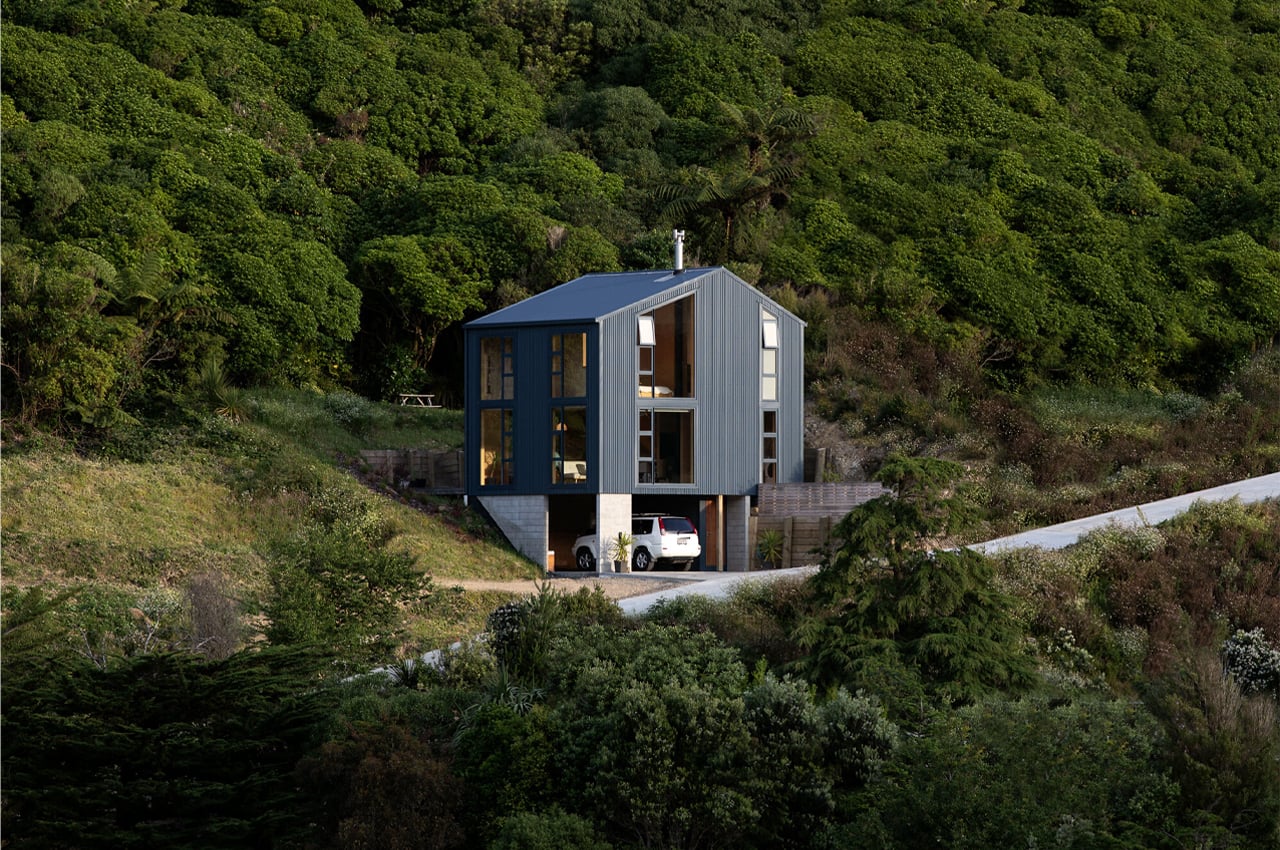
The Thornton-Hasegawa House is a three-level residence in Wellington, New Zealand that has been future-proofed for off-grid use to find harmony with the surrounding landscape.
Bonnifait+Giesen Architects build homes that are designed to reconnect its residents with a “physical reality, a territory, its history, and a cultural context,” as the firm’s co-founders Cecile Bonnifait and William Giesen put it. As a result, their diverse portfolio of residential homes and commercial buildings exhibits a unique bond with the land that was there long before the buildings were given a foundation and walls. In Wellington, New Zealand, Bonnifait+Giesen Architects were asked to design a small home on a steep slope in Brooklyn, an old Wellington subdivision.
Designer: Bonnifait+Giesen Architects
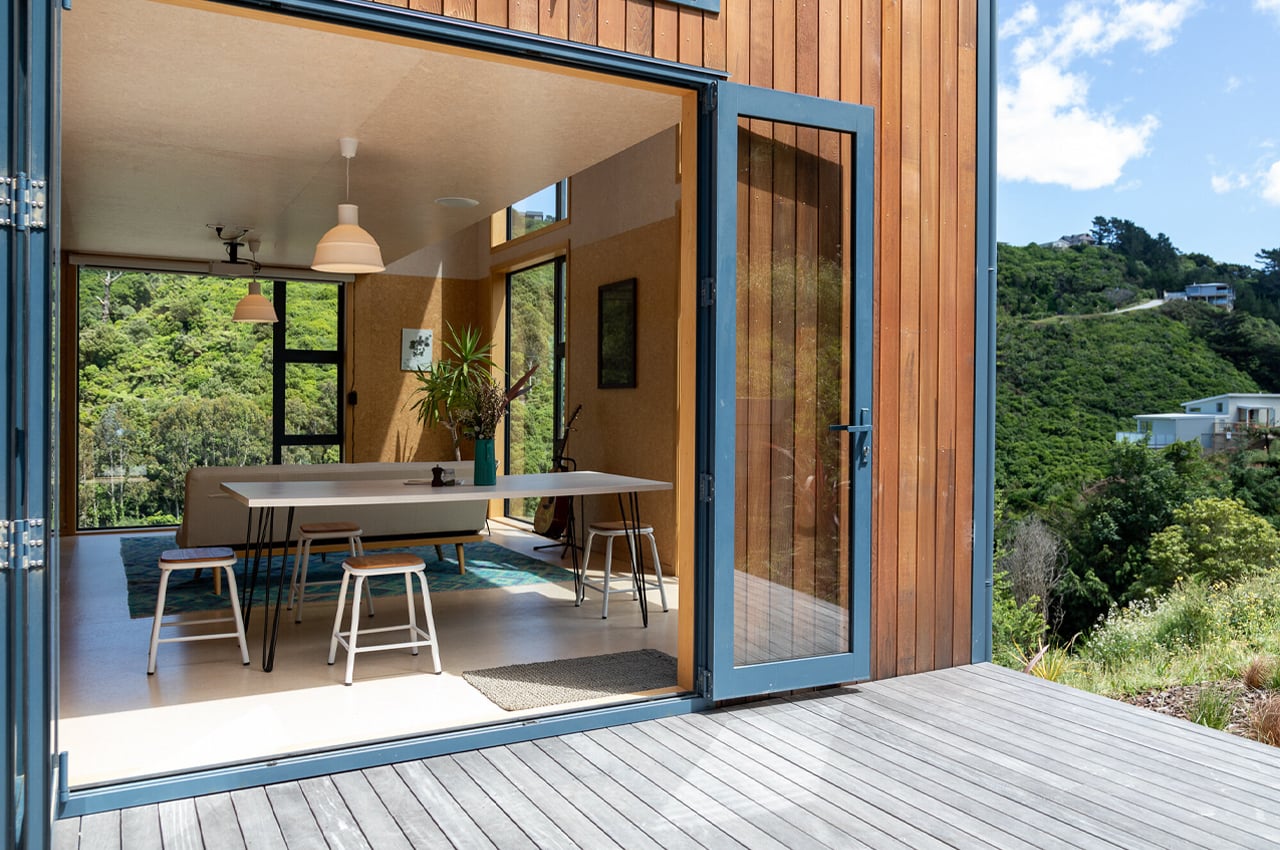
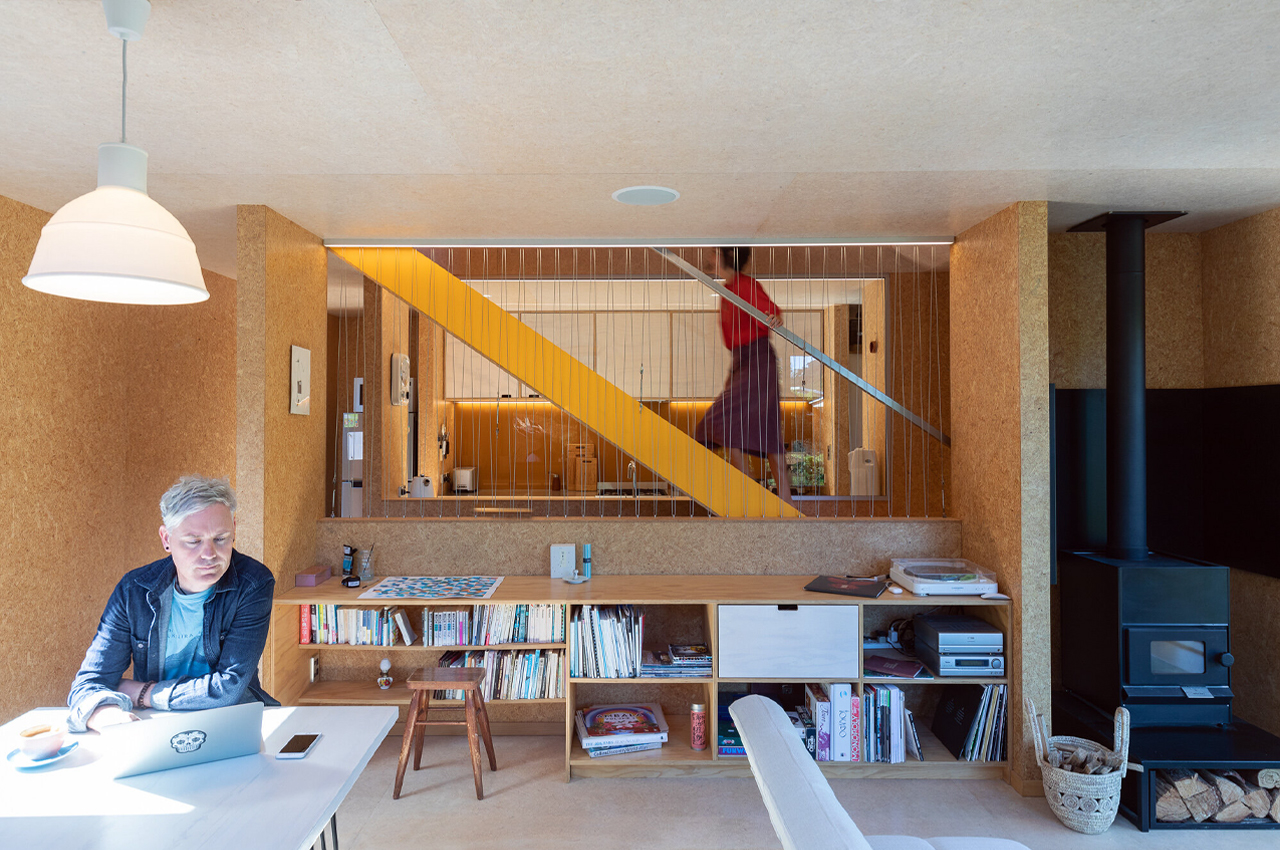
Calling it the Thornton-Hasegawa House, Bonnifait+Giesen Architects were met with a few challenges when designing the home in accordance with the wild terrain of Brooklyn’s steep hills. To meet the clients’, Tomoko and Aaron’s, request for a small, compact home connected to its surrounding landscape, Bonnifait+Giesen Architects found adaptability in a small footprint and vertical layout. Split between three levels, the Thornton-Hasegawa House covers 50-square-meters and appears as a small tower perched above Brooklyn’s thicket.
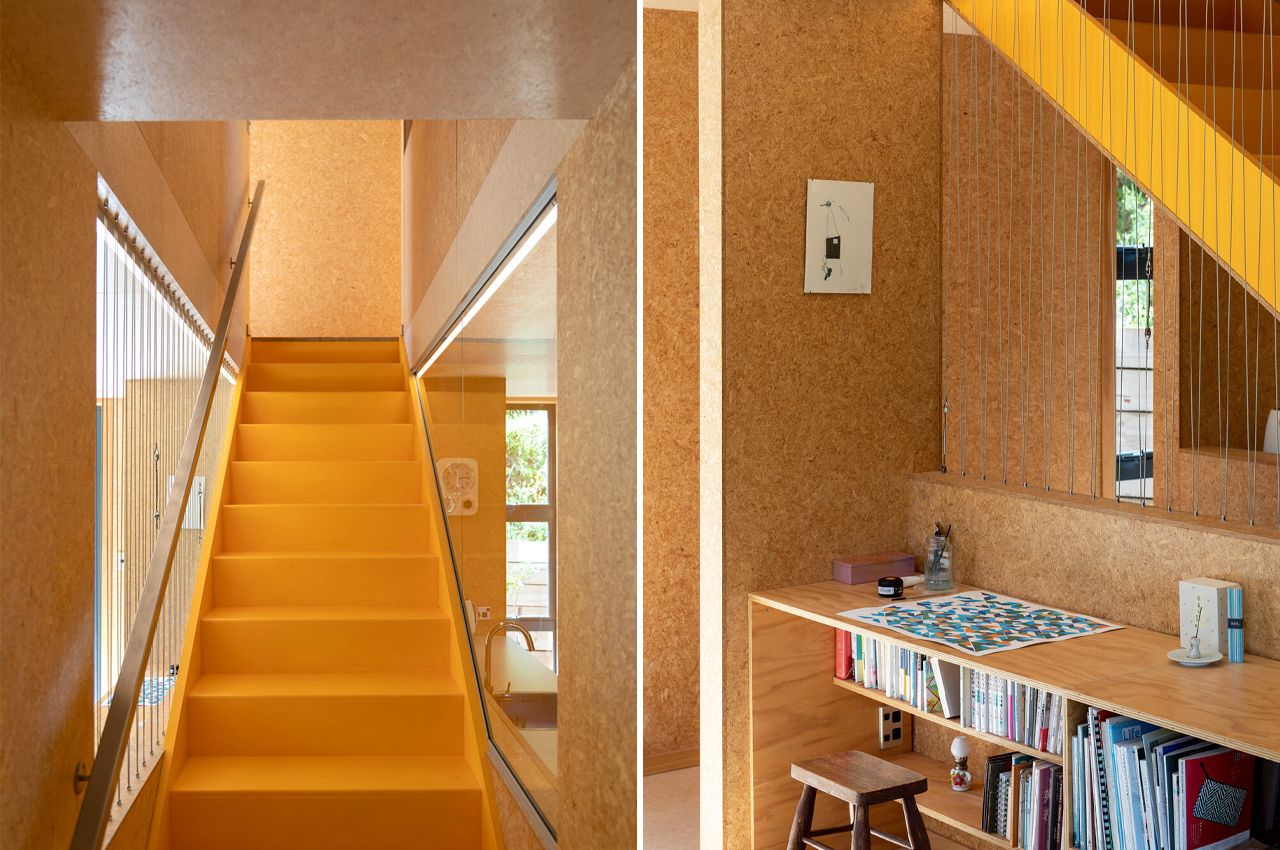
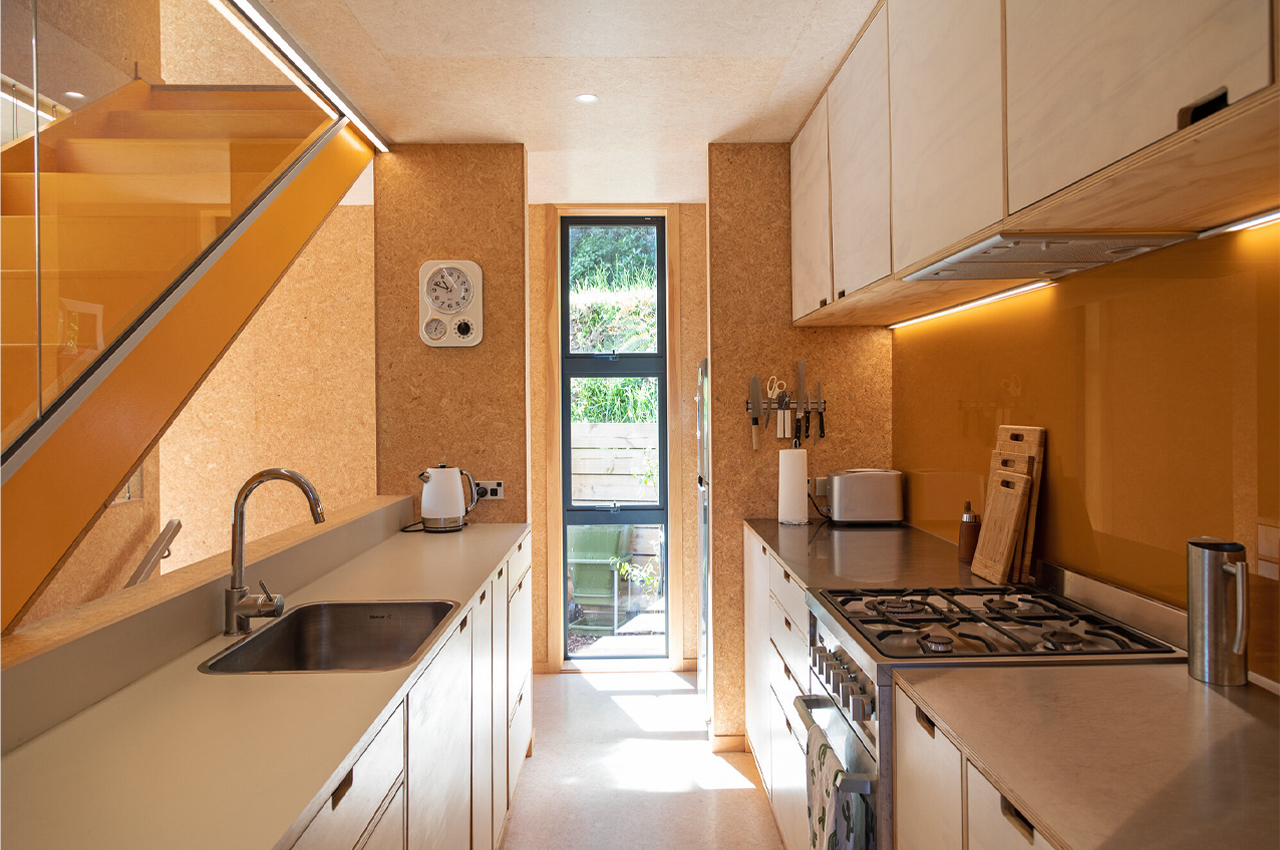
Entering the home, residents are greeted with bright walls that are entirely clad in oriented strand board (OSB), which has been coated with a whitewash finish, immediately giving the home a spacious, airy feel. Bonnifait+Giesen Architects followed this spacious effect throughout the home by splitting the living areas between two levels. On the lower level, residents can enjoy the more social areas, like the living room, dining area, and kitchen. Then, taking the yellow, Kowhai staircase to the home’s upper level, residents can find privacy and respite in the main bedroom and private bathroom.
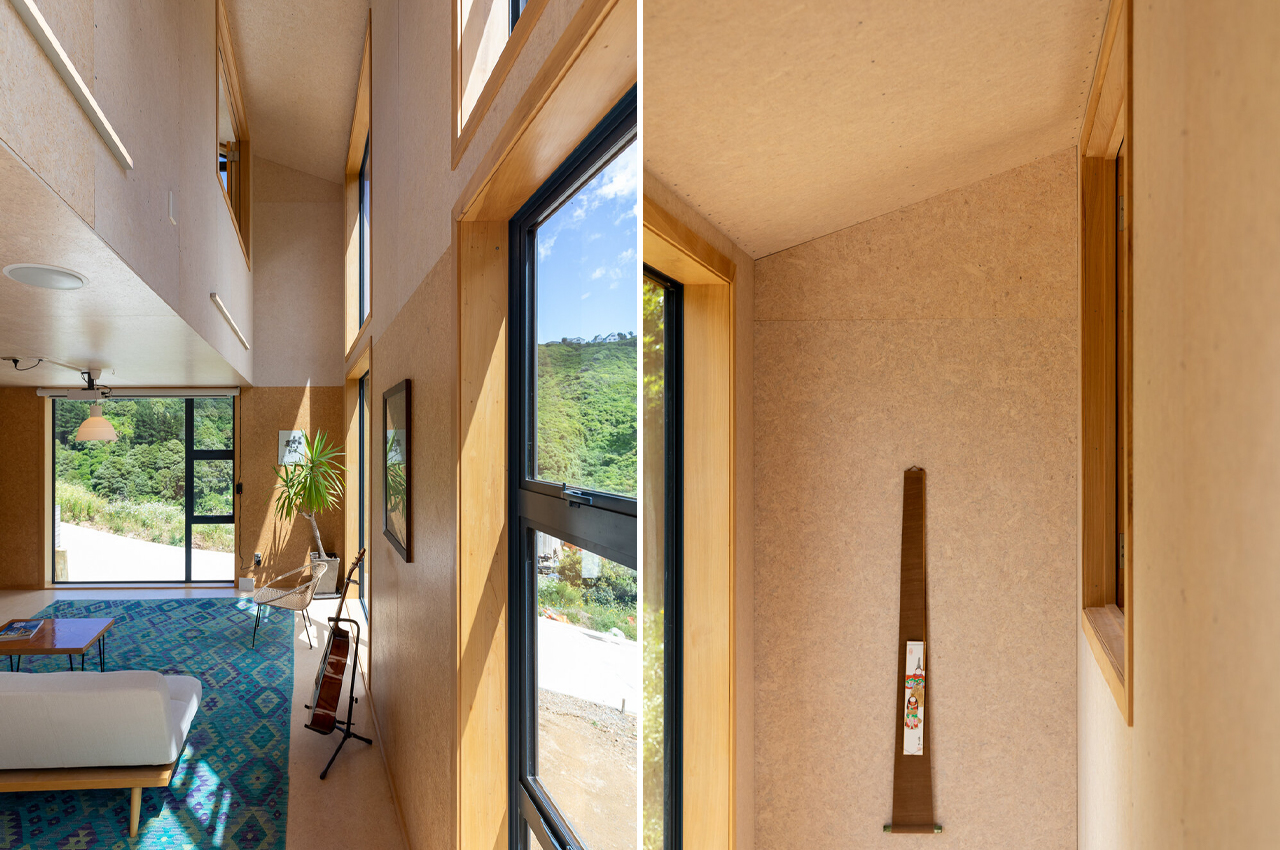
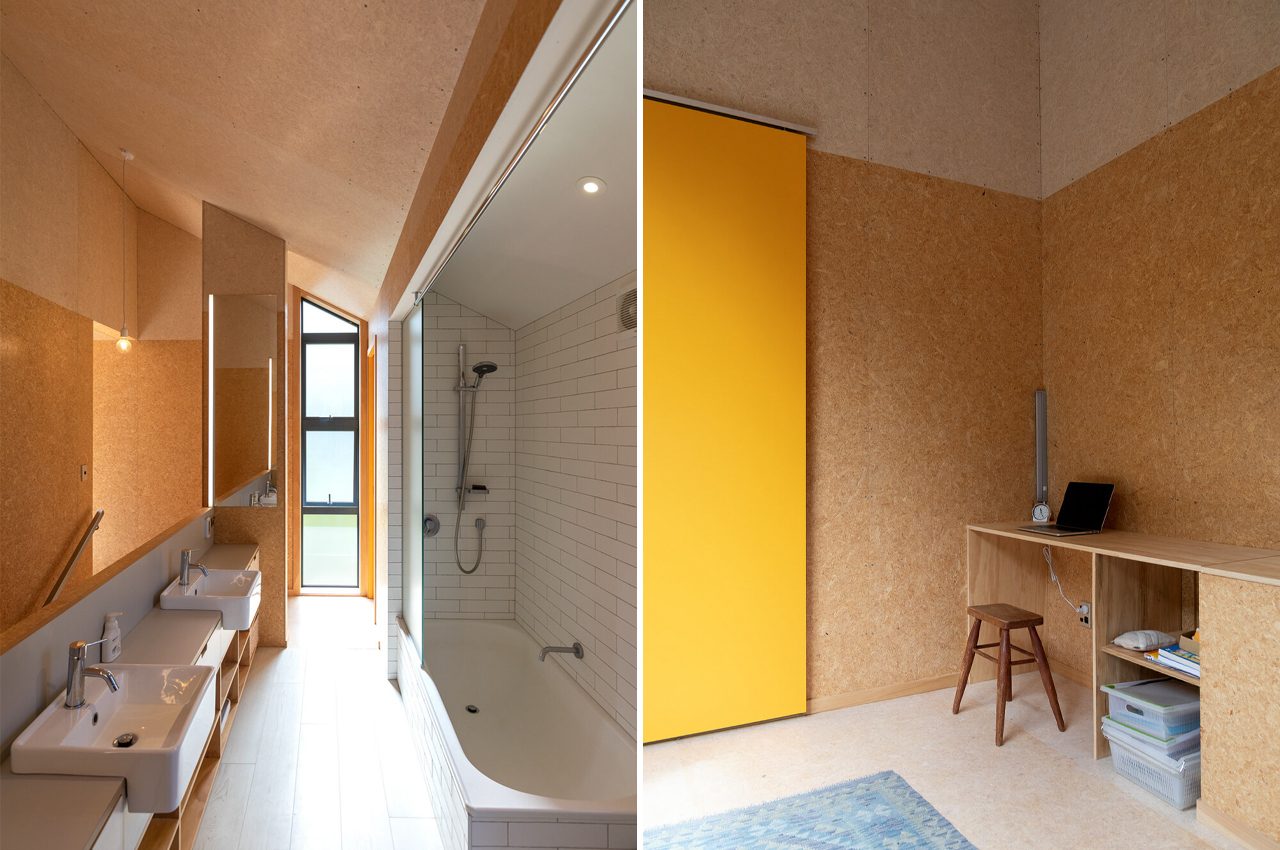
The outside of the home finds a classic, nautical personality with single cedar-clad facades that converge with cool, inky blue metal elements that brace the home from natural elements. Maximizing the Thornton-Hasegawa House’s connection to the surrounding landscape, Bonnifait+Giesen Architects future-proofed the home for off-grid use. As no services were onsite during the home’s initial design processes, Bonnifait and Giesen oriented the home’s north-facing roof to maximize its potential solar gain, allowing the double-height interior to collect pools of natural sunlight. Then, designated locations outside of the home were left for water tanks and batteries.
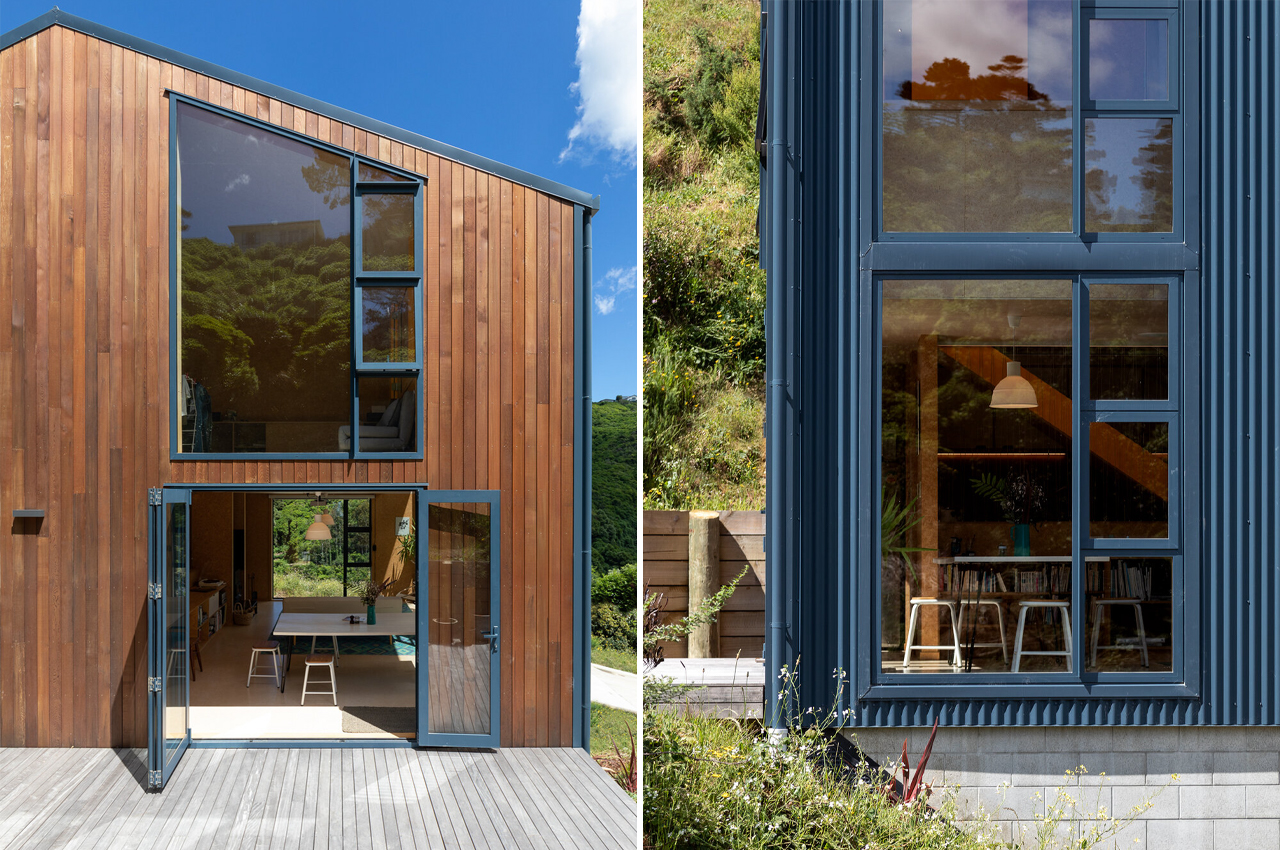
Floor-to-ceiling windows unfold to connect interior living spaces with an expansive outdoor deck.
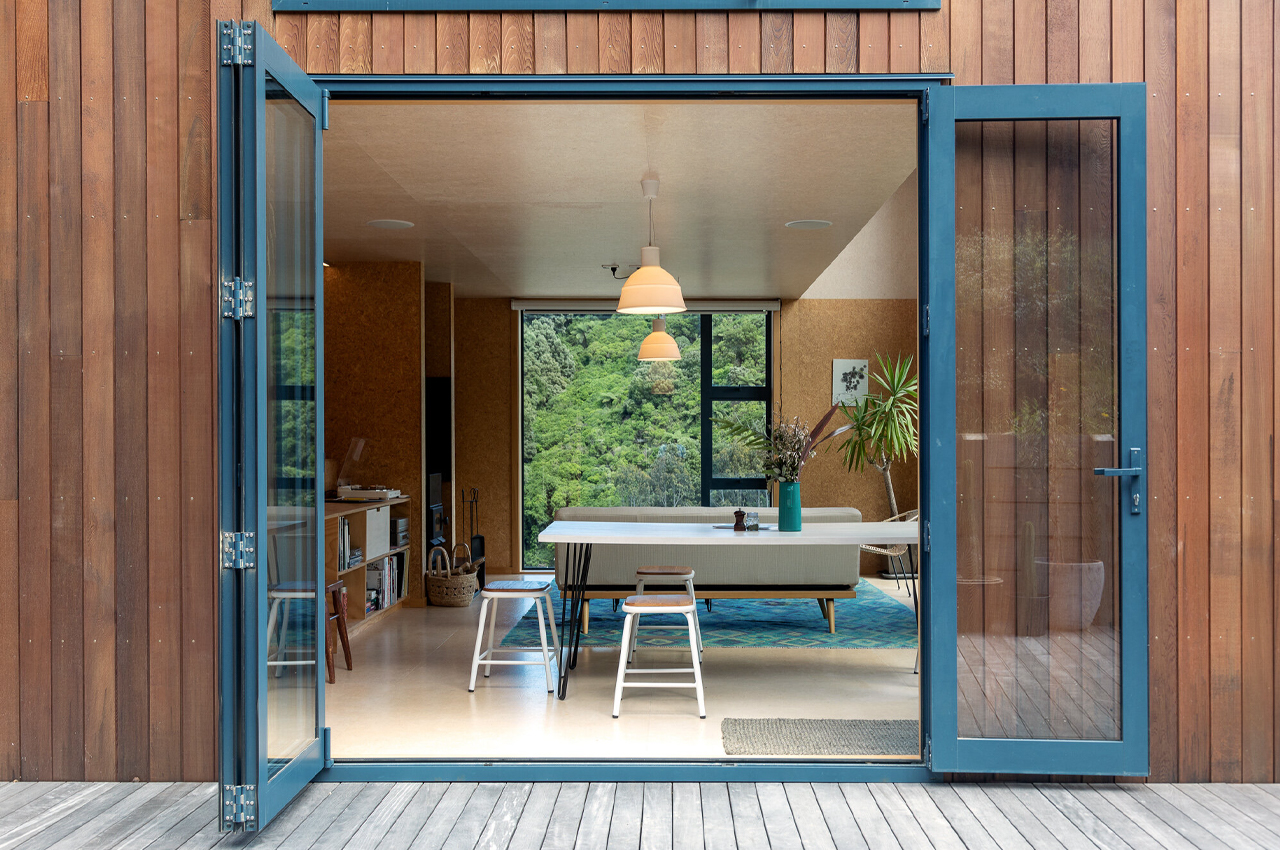
Glazed bi-fold doors grant access to the deck that runs the full length of the living spaces.
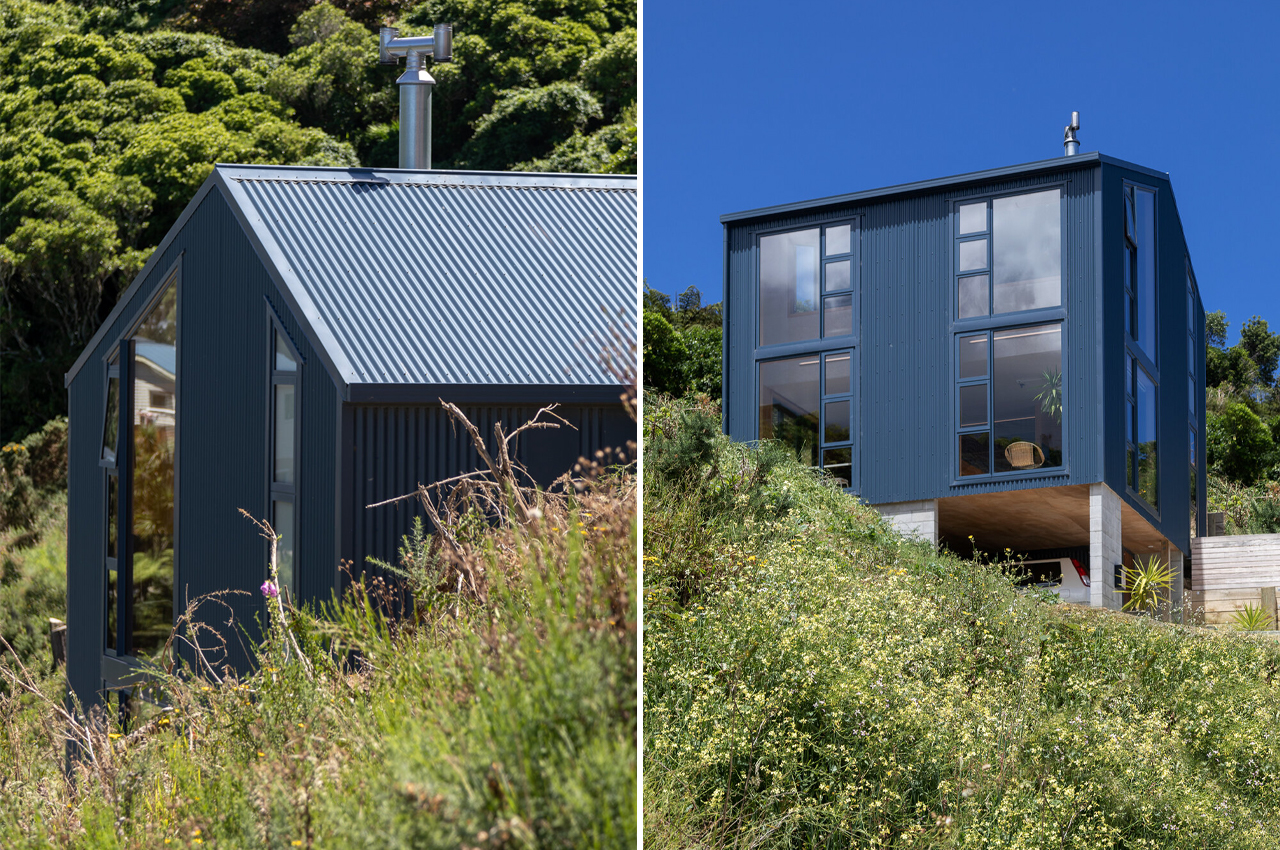
The cool, inky metal siding conceals the home in a sky blue to give it an elusive appeal.
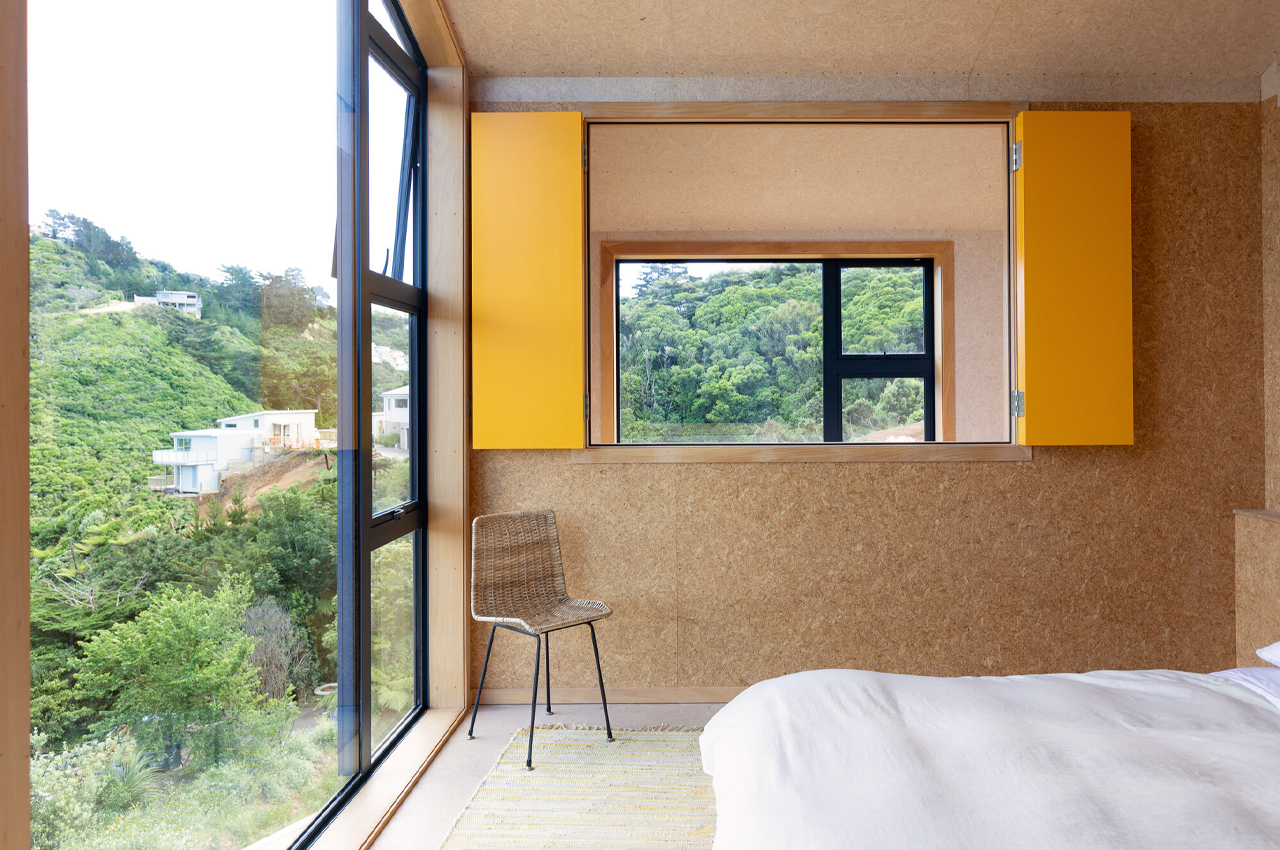
OSB paneling brightens the home’s interior to maximize the sunlight collected through the large internal windows.
The post This compact home finds harmony with New Zealand’s landscape through off-grid features and a small footprint first appeared on Yanko Design.
0 Commentaires